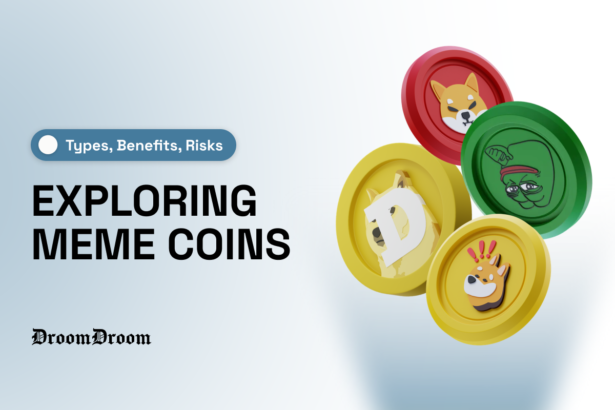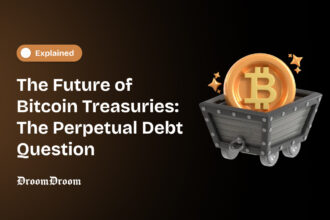Meme coins have carved out a niche that blends internet culture with digital currency investment. From their humorous beginnings to serious investment opportunities, these tokens are more than just a passing trend.
Meme coins are cryptocurrencies inspired by internet memes, popular culture, or jokes. They typically focus on building community support and rely on social media for growth. While offering potential for rapid gains, they are highly volatile and often lack practical utility beyond speculative trading.
But what exactly are meme coins, and why are they gaining such traction? Let’s dive in and find out.
What Are Meme Coins?
Meme coins are a subset of cryptocurrencies that originate from internet memes or are inspired by popular culture.
Unlike traditional cryptocurrencies like Bitcoin and Ethereum, which are designed with specific financial or technological purposes, meme coins typically focus on community engagement and the viral aspect of their themes.
Prominent examples like Dogecoin (DOGE) and Shiba Inu (SHIB) leverage popular internet memes to foster a sense of community and investor interest. But the question remains: how do these coins function, and what types are out there?
History & Expansion of the Meme Coin Universe
The story of meme coins begins with Dogecoin, the first and most iconic meme coin, which was created in December 2013.
Dogecoin was founded by Billy Markus from Portland, Oregon, and Jackson Palmer from Sydney, Australia. Both founders aimed to create a fun, light-hearted cryptocurrency that would appeal beyond the core Bitcoin audience. They chose the popular “Doge” meme as their mascot, which features a Shiba Inu dog known for its quirky internal monologue captions in Comic Sans font.
Dogecoin was initially introduced as a joke, but it quickly developed a strong community of supporters who used it for tips and small transactions on social media. The coin’s friendly appeal helped demystify the often complex world of cryptocurrencies for the general public.
Encouraged by the success of Dogecoin, other meme coins began to appear. Each new coin typically riffed on some aspect of pop culture or a current meme, leveraging the same playful spirit. Some notable examples include—
- Shiba Inu (SHIB): Often dubbed the “Dogecoin killer,” Shiba Inu was created in August 2020 by an anonymous individual or group known as “Ryoshi.” SHIB was modeled directly after Dogecoin but added elements such as a tokenomic model that included a massive total supply (one quadrillion tokens) and a decentralized exchange called ShibaSwap.
- SafeMoon, PepeCoin, and Others: As the crypto market expanded, so did the variety of meme coins, each introducing different features, such as deflationary mechanisms where tokens are burned with every transaction to reduce supply and increase value.
Prominent Meme Coins
Let’s break down a few notable players—
Dogecoin (DOGE)
Launched in 2013 as a joke, Dogecoin features the likeness of the Shiba Inu dog from the “Doge” meme. It has developed a robust community and has been used in various charitable efforts and online tipping.
Shiba Inu (SHIB)
Often considered a spinoff of Dogecoin, Shiba Inu was created in 2020 and has a vibrant community supporting its ecosystem, which includes a decentralized exchange called ShibaSwap.
Other Variants
Newer entrants like Pepe Coin (PEPE) and Dogelon Mars (ELON) continue to emerge, each adding a twist to the meme coin narrative and often focusing on different aspects of internet culture.
Now that you’re familiar with the types, you might be wondering: what draws people to invest in these coins? Let’s look at the potential benefits.
Pros of Investing in Meme Coins
Curious about the upside? Here are some reasons investors are flocking to meme coins—
- Community Support: Meme coins often have active, enthusiastic communities. Their engagement on social media platforms can drive quick price movements and provide a sense of belonging.
- Low Entry Cost: Many meme coins are relatively inexpensive, making them accessible to a broader audience that may be hesitant to invest in more established cryptocurrencies.
- Viral Potential: The ability of meme coins to go viral can lead to rapid gains. For instance, viral endorsements by celebrities can significantly influence their value.
While the advantages are compelling, the risks are equally significant. What should you watch out for?
Cons of Investing in Meme Coins
However, it’s not all fun and games. Here are some significant drawbacks to consider—
- High Volatility: Meme coins are subject to extreme price fluctuations, making them risky investments. Their value can skyrocket or plummet based on social media trends rather than fundamental economic indicators.
- Limited Utility: Unlike traditional cryptocurrencies, most meme coins do not offer real-world applications, focusing instead on community and speculative trading.
- Scam Risks: The meme coin sector is ripe with scams, including pump-and-dump schemes and rug pulls, where developers abandon the project and flee with investors’ money.
Given these risks, how should an investor approach meme coins? Let’s explore some strategic considerations.
Investor Considerations
Thinking of dipping your toes into meme coin investing? Here’s how you can approach it wisely—
- Research Thoroughly: Understand the origin, purpose, and community support of the meme coin.
- Assess Volatility: Be prepared for potentially wild price fluctuations.
- Invest Responsibly: Consider meme coins as a small, speculative part of a diversified investment portfolio.
Conclusion
To wrap it up, meme coins blend humor, culture, and digital currency in ways that can both enrich and challenge investors. They offer opportunities for significant returns, but the risks are equally high. By understanding both the cultural impact and the speculative nature of these coins, investors can better prepare themselves for the highs and lows of meme coin investment.
Navigate wisely, and you may just find a rewarding—if somewhat unconventional—investment path.




















